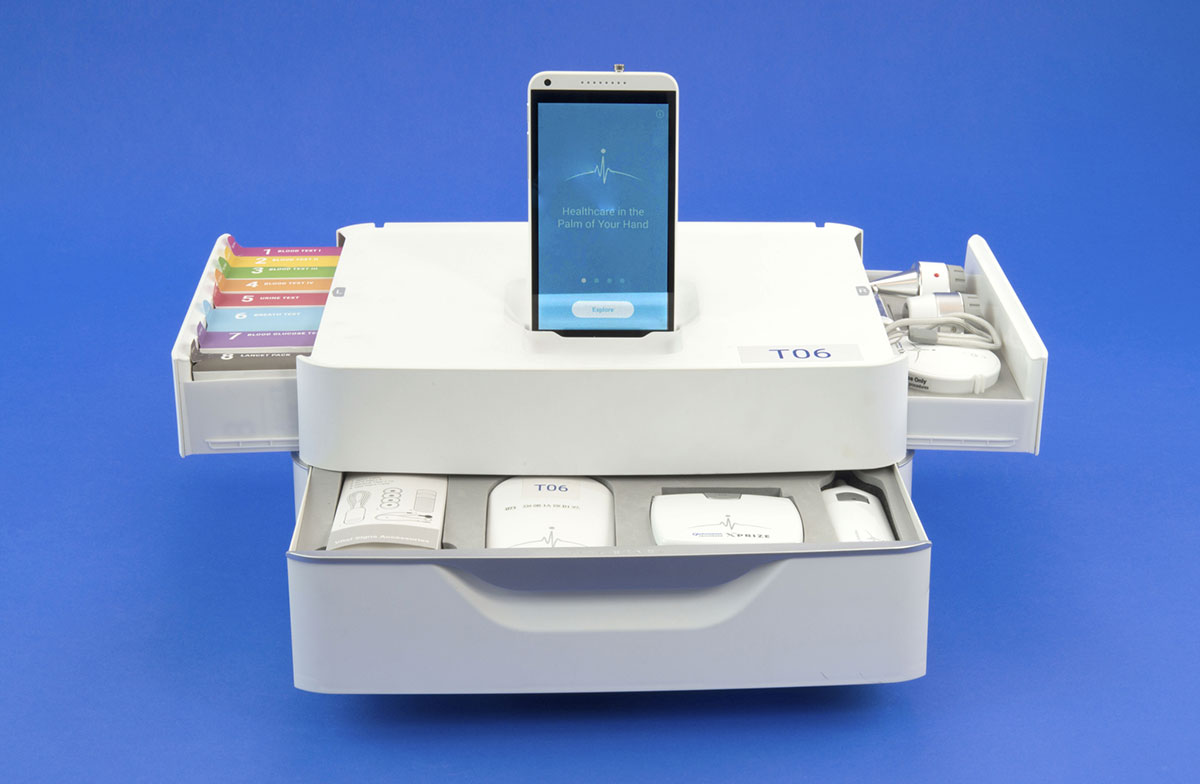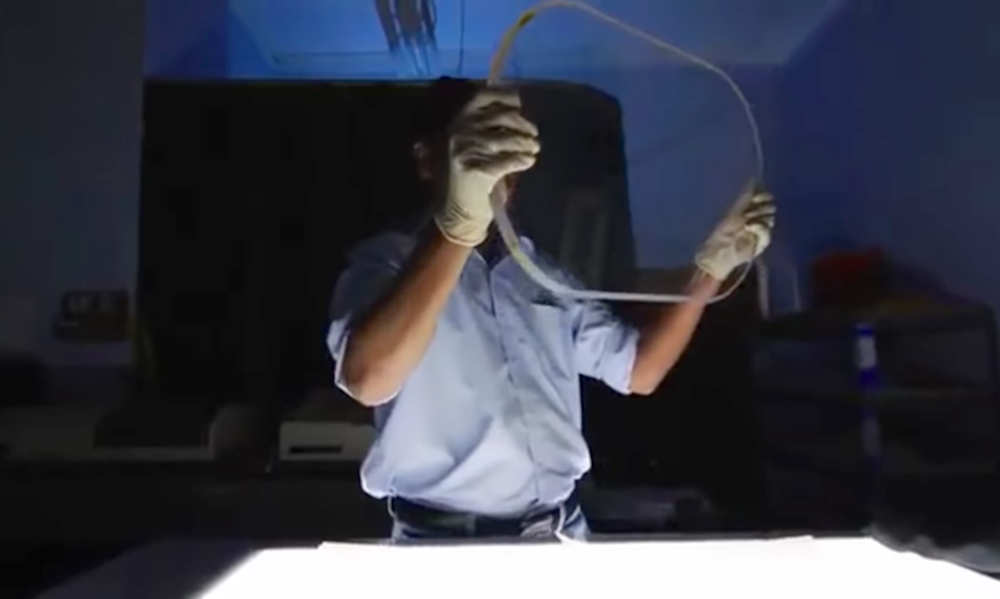More than just a cosmic science-fiction journey, Star Trek often sets the stage for weird and wonderful technology. If you’re reading this on a smartphone or a tablet, you’re holding definitive proof that an array of innovations represented on the show have managed to go beyond the drawing board. Here are another eight of my top choices.
Let us start this list with a simple one, one that we all use on a daily basis.

-
The automatic sliding door: Now I know what you’re thinking; “That’s not very high-tech, Tim, where’s the good stuff?” Well, I wanted to remind everyone that not everything we get from Star Trek is always flashy and fun, even with JJ Abrams’ lens flare. However, when Star Trek first came out and featured the sliding doors, people had never seen anything like that. In today’s world we use them every time we go to a Walmart or other big stores around the world. Always remember, no matter how small or simple something seems to you today, others had never seen anything like it just a handful of years ago.
Ok, now let’s get a little more advanced; on to the next one.
-
The holodeck: I know we’ve all wanted to be on the holodeck at some point in our lives; I know I have, and who wouldn’t?! I mean, to walk into a room and instantly be anywhere and do anything your heart desires! In a similar spirit, a team of scientists from Bilkent University, Turkey, has demonstrated the first realistic three-dimensional holograms viewable from any angle. “We achieved this feat by going to the fundamentals of holography,” said the paper’s first author, Dr. Ghaith Makey. His team’s immersive 3-D luminous shapes stem from creating hundreds of “image slices,” which are used to rehash a scene in much of its original complexity. Now it’s a long way from being able to visit the ShiKahr District on Vulcan, but it sure is a good start.
This next one could one day help save lives.
-
 The tricorder: Now there are a few different prototypes of what could be considered a tricorder, everything from handheld ultrasound devices to a DNA tester that fits in the palm of your hand. A lot of this tech is still experimental but holds great potential for the future. The doctors of Star Trek can diagnose almost anything instantly with the tricorder. Now, a real-world handheld DNA tester called MinION can recognize the Ebola virus and genetically profile tumors, among other uses, almost as fast. The MinION can fit in the palm of your hand and is the size of a smartphone. This device was made by UK-based Oxford Nanopore Technologies. With a small tissue sample from which to tap DNA, and a laptop, it could be a game changer for the medical field.
The tricorder: Now there are a few different prototypes of what could be considered a tricorder, everything from handheld ultrasound devices to a DNA tester that fits in the palm of your hand. A lot of this tech is still experimental but holds great potential for the future. The doctors of Star Trek can diagnose almost anything instantly with the tricorder. Now, a real-world handheld DNA tester called MinION can recognize the Ebola virus and genetically profile tumors, among other uses, almost as fast. The MinION can fit in the palm of your hand and is the size of a smartphone. This device was made by UK-based Oxford Nanopore Technologies. With a small tissue sample from which to tap DNA, and a laptop, it could be a game changer for the medical field.
Our next piece of tech on the list is one that could help open many people’s eyes.
-
The Visor: We all know Geordi La Forge and his famous visor that helps him see. There is a similar piece of tech that is helping the legally blind see for the first time. The eSight 3 helps people see by using a camera that works with high-resolution displays and optical prisms in the headset to restore sight. A woman and user of the eSight 3 user, Yvonne Felix, told CNET, “I remember putting them on and looking up and I saw my husband, who I’d been married to for eight years and had never seen before.” That is what Star Trek is all about, helping those in need and doing what we can to make their lives better.
Keeping with the medical tech, this next one’s for you if you’re afraid of needles.
-
The hypospray: I don’t know about you, but when I was a kid, I did not like needles. I would have given anything to not have to get shots, but today those shots are saving lives. The hypospray is a form of hypodermic injection of medication or even a lifesaving vaccine. Instead of a needle to deliver the medication, the hypospray injection is forced under the skin (a subcutaneous injection) with high air pressure. The air pressure shoots the vaccine deep enough into the skin that a needle is not needed. Today we use what’s called a jet injector; these have been in use for many years. In fact, this may be the time where Star Trek copied real life, as the jet injector predates Star Trek. Jet injectors were first designed to be used in mass vaccinations, being safer than a needle and faster in administering the vaccines. Looking a lot like a small paintball gun with a large tank, they can hold a larger amount of vaccine, thus helping medical personnel inoculate more people quicker.
Looking out your window could have a whole new meaning with this next piece of tech.
-
 Transparent aluminum: I know we all remember that time Kirk and his crew went back in time to rescue a couple of humpback whales in order to save Earth. While back in the mid 80’s, Scotty had to build a giant fish tank on an old Klingon bird of prey; to do so he traded the formula for transparent aluminum for some plexiglass to build said tank. It may sound impossible, but there is such a thing as transparent aluminum armor, or aluminum oxynitride (ALON), as it’s more commonly known. ALON is a ceramic material that starts out as a powder before heat and pressure turn it into a crystalline form similar to glass. Once in the crystalline form, the material is strong enough to withstand bullets. Polishing the molded ALON strengthens the material even more. The Air Force has tested the material in hopes of replacing windows and canopies in its aircraft. Transparent aluminum armor is lighter and stronger than bulletproof glass.
Transparent aluminum: I know we all remember that time Kirk and his crew went back in time to rescue a couple of humpback whales in order to save Earth. While back in the mid 80’s, Scotty had to build a giant fish tank on an old Klingon bird of prey; to do so he traded the formula for transparent aluminum for some plexiglass to build said tank. It may sound impossible, but there is such a thing as transparent aluminum armor, or aluminum oxynitride (ALON), as it’s more commonly known. ALON is a ceramic material that starts out as a powder before heat and pressure turn it into a crystalline form similar to glass. Once in the crystalline form, the material is strong enough to withstand bullets. Polishing the molded ALON strengthens the material even more. The Air Force has tested the material in hopes of replacing windows and canopies in its aircraft. Transparent aluminum armor is lighter and stronger than bulletproof glass.
Next one on the list may not be advanced tech, but I know I want one when the time comes.
-
Torpedo Coffins: I was only a child when my mom took me to see The Wrath of Khan and watch our beloved Spock die saving the Enterprise, but I cried like the child I was. At the end we see Spock being fired out of the torpedo launcher, in his very own torpedo-shaped coffin. Believe it or not, you too could be laid to rest in your very own Photon Torpedo coffin! It may not be a truly Federation-approved torpedo, but the torpedo-shaped coffins are very real. A coffin company by the name of Eternal Image was slated to release the Star Trek coffin in 2009, but due to unforeseen circumstances they haven’t quite gone into full production. They haven’t set a price yet, either; however if you want to go with something smaller, they are offering the Star Trek urn as well.
Since the pandemic sent many of us to work from home, some of us may have used a form of the last one on today’s list.
-
 Telepresence/Teleconference: In 1966, the idea of interacting with each other while separated by the void of space seemed as far-fetched as, well, the idea of being in space. That’s precisely what the idea of telepresence is. Telepresence is more than just video conferencing. The visual aspect is important, and immersion is vital. In other words, the more convincing the illusion of telepresence, the more you feel like you’re there. In 2008, AT&T teamed up with Cisco in delivering the industry’s first in-depth telepresence experience. The key to Cisco’s telepresence is the combination of audio, video and ambient lighting working together. Now we may not have anything as advanced as a Cisco kit at home, but doing a Zoom meeting can be just as fun!!
Telepresence/Teleconference: In 1966, the idea of interacting with each other while separated by the void of space seemed as far-fetched as, well, the idea of being in space. That’s precisely what the idea of telepresence is. Telepresence is more than just video conferencing. The visual aspect is important, and immersion is vital. In other words, the more convincing the illusion of telepresence, the more you feel like you’re there. In 2008, AT&T teamed up with Cisco in delivering the industry’s first in-depth telepresence experience. The key to Cisco’s telepresence is the combination of audio, video and ambient lighting working together. Now we may not have anything as advanced as a Cisco kit at home, but doing a Zoom meeting can be just as fun!!
Thank you all for taking the time to read my picks for Star Trek-inspired technologies and devices we use today. We have come a long way since Star Trek premiered in the 60’s, and I feel we have a long way to go too. I hope with so much Star Trek coming on the horizon, we get much more Star Trek-inspired tech coming our way. Who knows, maybe one day soon we’ll all get to ride a lipstick tube-shaped rocket into space!!
Until next we meet again, my friends, as always, stay safe out there, and live long and prosper.
LT Timothy Epperson Chief Science Officer USS Tiburon
